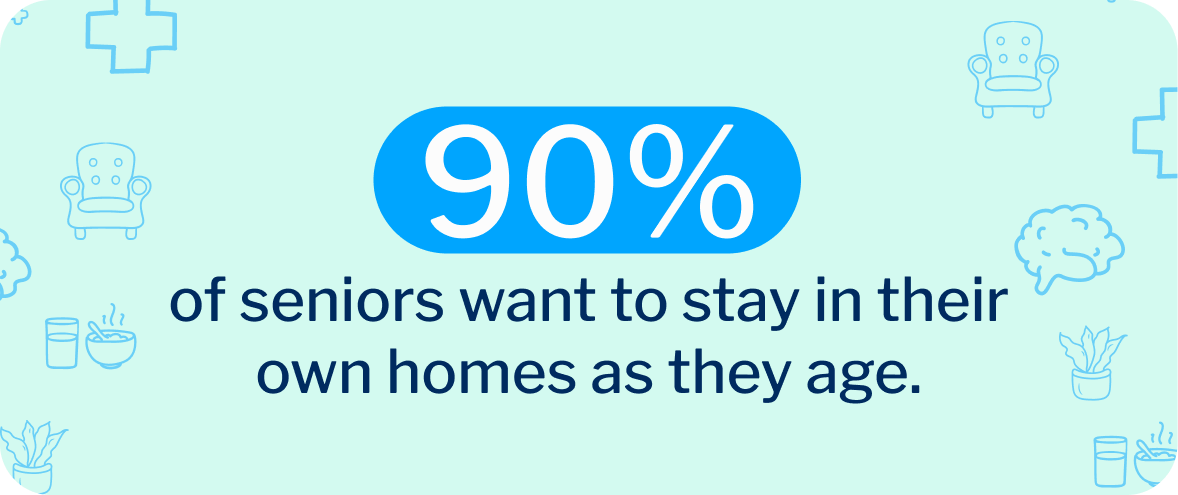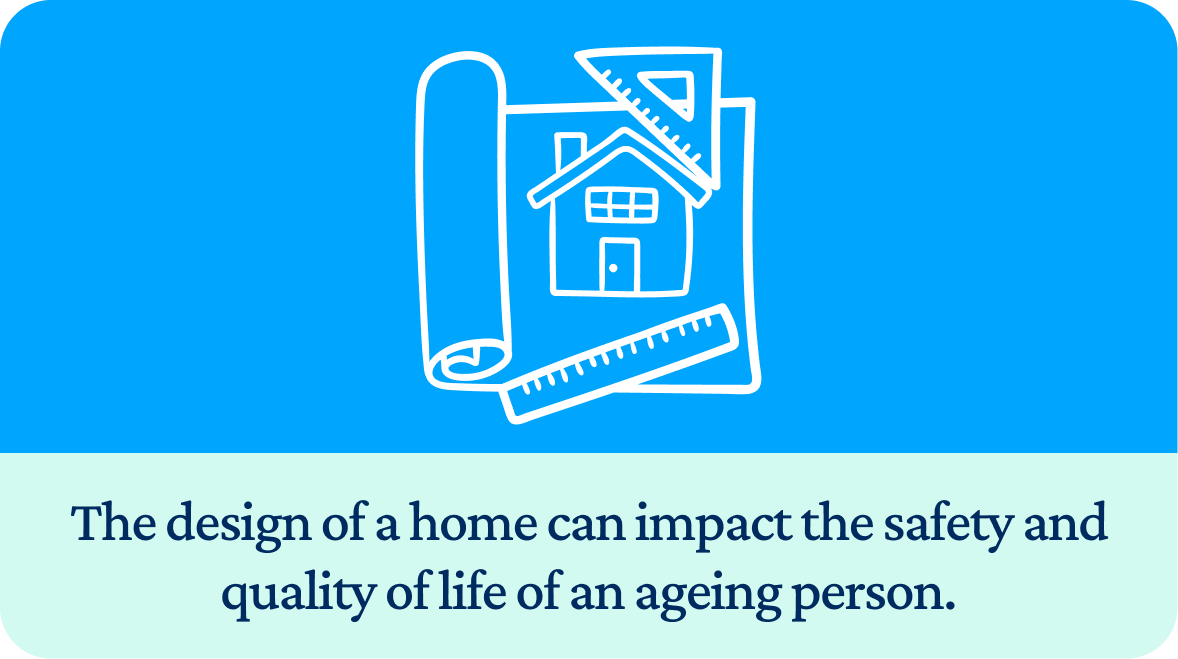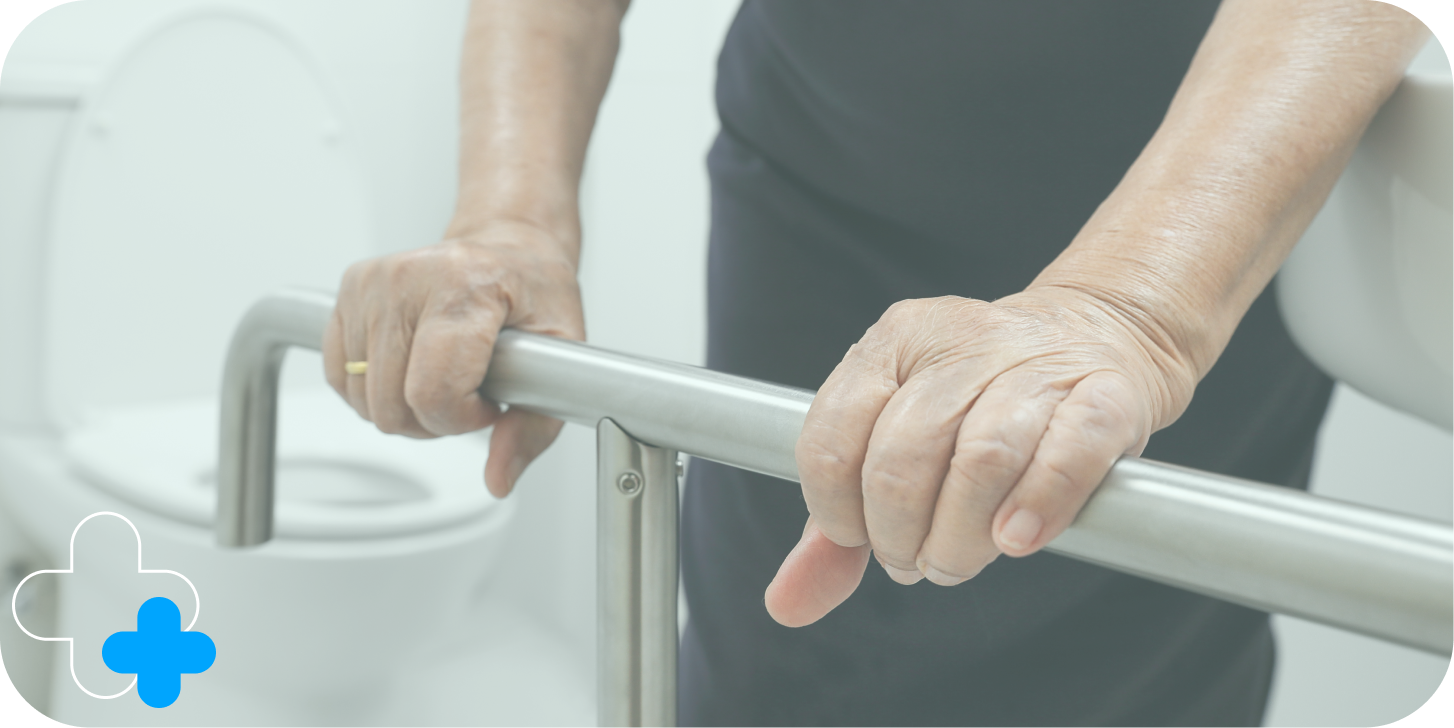Ageing in place refers to older adults staying at home as they age, rather than moving to a senior living community or aged care facility. Nearly 90% of seniors want to stay in their own homes as they age, and ageing in place promotes independence and self-esteem and helps seniors remain happy and healthy. But as we age, tasks that were once easy can become much more time-consuming, difficult or unsafe.

The design and construction of a home can have a big impact on the safety, independence and quality of life of an ageing person. The layout of traditional bathrooms and kitchens, narrow doorways and halls, stairs and other features in a home can create a need for paid care in the home, increasing the number of care hours, or having to move to an aged care facility. Home modifications can help seniors remain safely in their homes when facing the challenges of ageing, such as impaired vision, mobility, frailty or difficulty grabbing or turning knobs.
Home modifications for seniors are any changes made to the home to help a person be more independent and safe, and reduce the risk of injury to their carers and care workers. Typically these modifications focus on preventing falls, increasing safety, maintaining function and independence, improving physical health and well-being, and eliminating the need to move into an aged care facility.
Assessment and recommendations for home modifications are typically performed by an occupational therapist. They can provide advice in relation to both minor and complex home modification solutions.
Modifications range from simple things like replacing turn-style knobs with cabinet pull handles and lever-style door and faucet handles to complex renovation projects that involve structural changes to the home and require a skilled building professional. Sometimes making a few affordable changes around your home can make all the difference.
Common Home Modifications for Seniors
- Handheld showers
- Grab bars and handrails to provide stability
- Raised toilets and level access showers
- Improved lighting
- Replacing carpet with flooring that is safer and easier for mobility
- Installing wheelchair ramps
- Widening doorways and hallways to accommodate walkers and wheelchairs
- Lowering cabinets and countertops
- No-step entries and single-floor living to eliminate the need to navigate stairs
- Switches and outlets are reachable at any height
How can you get help with senior home modifications?
This is a type of help-at-home service that is subsidized by the Australian Government to help you live safely and independently in your home. Recent reforms to aged care and the National Disability Insurance Scheme have changed some of the eligibility and funding rules of home modification assistance and may be different depending on where you live.
Based on your eligibility, specific care needs, and financial situation you may receive assistance with home modifications through the Commonwealth Home Support Program, as part of a Home Care Package, or through your NDIS benefits.
Next Steps
If you are a senior 65 or older and not an NDIS participant:
Go to the My Aged Care website: www.myagedcare.gov.au
Friendly knowledgeable representatives are there to help with determining benefits you may already have and locating service providers in your area.
This service is designed to improve or maintain the mobility, function, safety and independence of senior Australians living at home. It includes recommendations regarding the safety of your home environment, installing simple adaptive fixtures and equipment such as lever-style faucet handles and grab rails in the bathroom and installing access ramps.
If you are a senior 65 or older and currently an NDIS participant:
Go to the NDIS website: www.ndis.gov.au
You may receive assistance with home modifications as part of your disability supports.
Or you may obtain the supports you need through the Commonwealth My Aged Care system. They can help you to determine the supports you already have, additional supports you may be eligible for, and how to arrange for the home modifications you need: www.myagedcare.gov.au
If you are Aboriginal or Torres Strait Islander and age 50-64:
You may choose either NDIS or My Aged Care.
For NDIS assistance go to the NDIS website and search for ACCESS REQUEST or use this quick link, download the form, and begin the application process.
For My Aged Care assistance go to the My Aged Care website and search for providers in your area: www.myagedcare.gov.au/find-a-provider








